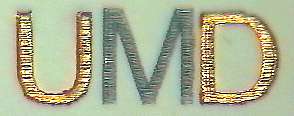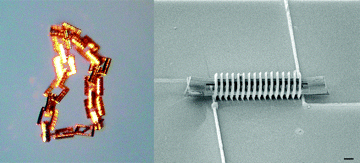UM Team Devises Way to Use Metal in Micromachines

In the world of microtechnology, entire "machines," so tiny the naked eye can't see them, can be manufactured to create things like sensors that deploy car air bags. But conventional micromachine fabrication technologies have been based on silicon, limiting them when it comes to making complex, three-dimensional structures.
Now, a team of researchers, led by University Maryland chemistry professor John T. Fourkas, has developed a technique for creating microscopic structures from multiple materials, paving the way for the creation of entirely new types of micromachines.
In a paper appearing in the February 15 issue of the Journal of the American Chemical Society, Fourkas and fellow researchers describe their invention of a method that can incorporate a broad range of materials, including metal, into structures fabricated by multiphoton absorption polymerization (MAP), a technique being developed by a number of groups around the world.
MAP uses a laser to harden a special liquid to create microscopic 3-D structures that are composed of a material similar to plexiglass. "It's akin to the process that dentists use to harden composite fillings," said Fourkas, "except that the laser beam allows us to do the hardening on a point by point basis."

A major drawback of MAP, however, is that it has been limited to the creation of structures made only of plastic. "For many applications it is necessary to be able to include other materials as well," says Fourkas. "The ability to incorporate materials other than plastic is a crucial step forward for multiphoton fabrication."
To demonstrate their technique, Fourkas and his team deposited metal selectively on specific regions of 3-D microstructures. By metal-coating a plastic coil fabricated using MAP, they were able to create and measure the properties of an inductor, a component used in electronic devices such as cell phones, that was a tenth as long as the diameter of a human hair. "Although we demonstrated the deposition of metal to make electrical devices, the same basic strategy will work with other materials, such as biomolecules or even glass," Fourkas said. "This should make it possible to create a whole new generation of microscopic sensors, actuators, and other devices."
Also participating in the research were postdoctoral researcher Richard Farrer, graduate students Christopher LaFratta, Linjie Lie, and Julie Praino, and collaborators Michael Naughton of Boston College and Bahaa Saleh and Malvin Teich of Boston University.
Source: University of Maryland

















